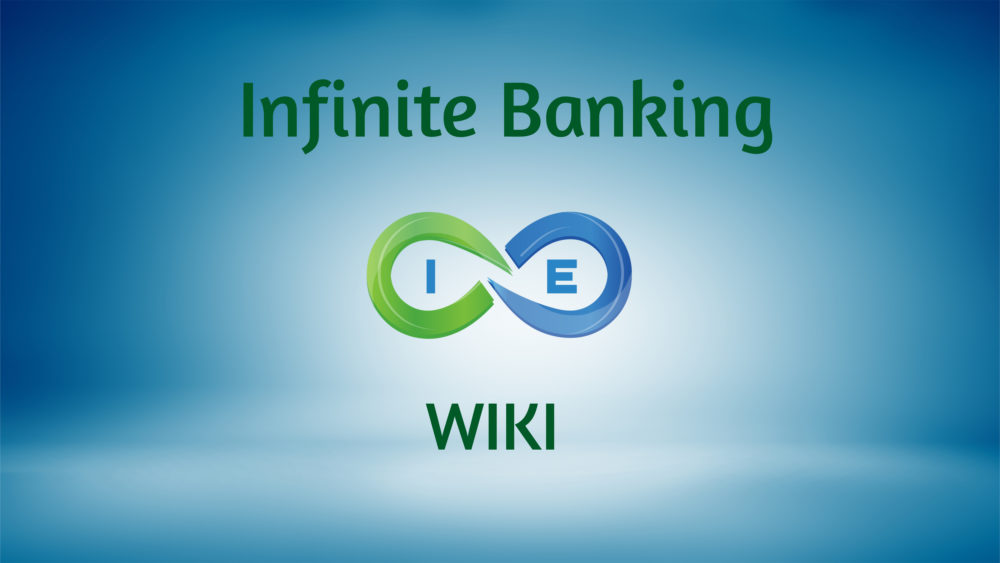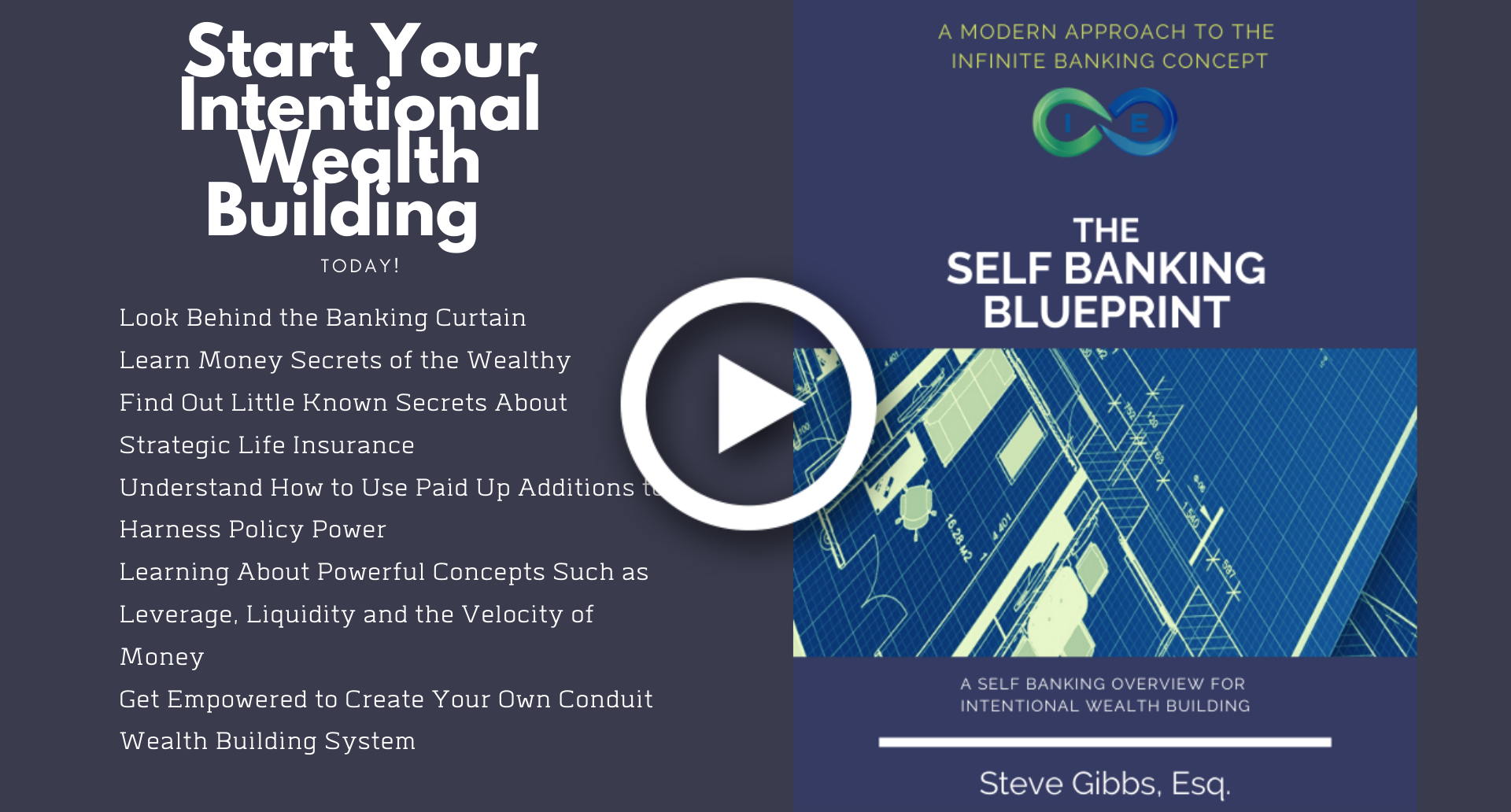All Categories
Featured
Table of Contents
Okay, to be fair you're actually "banking with an insurance provider" instead than "banking on yourself", yet that concept is not as easy to sell. Why the term "boundless" banking? The idea is to have your cash operating in several places simultaneously, instead than in a solitary location. It's a little bit like the idea of buying a house with cash money, after that obtaining against your home and putting the cash to operate in an additional financial investment.
Some individuals like to speak about the "velocity of cash", which primarily means the exact same point. Actually, you are just making best use of take advantage of, which works, yet, obviously, functions both means. Truthfully, every one of these terms are frauds, as you will see listed below. However that does not indicate there is nothing worthwhile to this principle once you surpass the advertising and marketing.
The entire life insurance sector is tormented by excessively expensive insurance coverage, substantial commissions, unethical sales techniques, low prices of return, and badly informed clients and salespeople. But if you wish to "Financial institution on Yourself", you're mosting likely to have to fall to this market and actually buy whole life insurance coverage. There is no replacement.
The guarantees intrinsic in this product are essential to its function. You can obtain against a lot of sorts of money worth life insurance policy, however you should not "bank" with them. As you acquire an entire life insurance policy policy to "bank" with, keep in mind that this is an entirely different area of your economic strategy from the life insurance policy section.
As you will see below, your "Infinite Banking" policy truly is not going to accurately supply this important financial function. One more trouble with the reality that IB/BOY/LEAP counts, at its core, on an entire life plan is that it can make acquiring a plan bothersome for many of those interested in doing so.
Using A Life Insurance Policy As A Bank
Harmful leisure activities such as diving, rock climbing, skydiving, or flying also do not blend well with life insurance policy items. The IB/BOY/LEAP advocates (salesmen?) have a workaround for youbuy the policy on a person else! That may function out great, because the factor of the plan is not the fatality benefit, yet bear in mind that purchasing a plan on small kids is a lot more costly than it ought to be given that they are typically underwritten at a "basic" rate instead of a preferred one.

Many policies are structured to do a couple of things. A lot of generally, plans are structured to make the most of the compensation to the representative selling it. Cynical? Yes. However it's the fact. The commission on an entire life insurance policy policy is 50-110% of the first year's costs. Often plans are structured to make best use of the survivor benefit for the premiums paid.
The rate of return on the policy is very crucial. One of the finest methods to maximize that aspect is to get as much cash as possible into the plan.
The very best way to enhance the rate of return of a policy is to have a fairly tiny "base policy", and then placed more money into it with "paid-up additions". Rather of asking "How little can I put in to get a certain fatality benefit?" the inquiry becomes "Just how much can I legitimately took into the plan?" With even more money in the plan, there is even more cash money worth left after the costs of the survivor benefit are paid.
An additional advantage of a paid-up enhancement over a normal costs is that the payment rate is reduced (like 3-4% rather than 50-110%) on paid-up additions than the base plan. The much less you pay in commission, the higher your rate of return. The price of return on your money worth is still going to be unfavorable for a while, like all cash value insurance coverage.
It is not interest-free. It may cost as much as 8%. A lot of insurer just offer "straight recognition" financings. With a straight recognition finance, if you obtain out $50K, the returns price applied to the money value every year only relates to the $150K left in the policy.
Uob Privilege Banking Visa Infinite
With a non-direct acknowledgment financing, the business still pays the very same reward, whether you have "obtained the cash out" (practically against) the plan or not. Crazy, right? Why would they do that? That recognizes? However they do. Typically this attribute is combined with some less valuable facet of the plan, such as a lower reward rate than you may obtain from a policy with straight acknowledgment finances (be your own bank whole life insurance).
The firms do not have a source of magic cost-free cash, so what they give up one place in the plan need to be taken from one more location. Yet if it is extracted from a function you care much less around and put right into a feature you care more about, that is a good idea for you.
There is another vital attribute, normally called "clean lendings". While it is terrific to still have actually dividends paid on cash you have gotten of the policy, you still have to pay passion on that particular loan. If the returns rate is 4% and the loan is billing 8%, you're not precisely coming out in advance.
With a wash finance, your financing rate of interest is the same as the dividend rate on the policy. So while you are paying 5% rate of interest on the funding, that passion is entirely balanced out by the 5% dividend on the lending. So in that regard, it acts just like you withdrew the cash from a savings account.

5%-5% = 0%-0%. Same very same. Thus, you are currently "financial on yourself." Without all 3 of these elements, this policy simply is not going to work quite possibly for IB/BOY/LEAP. The greatest concern with IB/BOY/LEAP is individuals pushing it. Almost all of them stand to benefit from you getting right into this principle.
In fact, there are lots of insurance representatives speaking about IB/BOY/LEAP as a feature of whole life who are not actually offering plans with the necessary features to do it! The problem is that those who recognize the principle best have a large conflict of rate of interest and normally inflate the benefits of the idea (and the underlying plan).
Whole Life Insurance For Infinite Banking
You should compare borrowing against your policy to withdrawing cash from your cost savings account. No cash in cash money value life insurance coverage. You can place the cash in the financial institution, you can spend it, or you can buy an IB/BOY/LEAP plan.
It grows as the account pays rate of interest. You pay tax obligations on the interest annually. When it comes time to get the boat, you take out the cash and get the boat. Then you can save some even more cash and placed it back in the banking account to start to gain passion once more.
It grows throughout the years with funding gains, returns, leas, and so on. Some of that earnings is exhausted as you accompany. When it comes time to buy the watercraft, you market the financial investment and pay tax obligations on your lengthy term resources gains. You can conserve some even more money and buy some even more financial investments.
The money value not used to pay for insurance coverage and payments expands over the years at the reward rate without tax drag. It starts with unfavorable returns, yet with any luck by year 5 or two has recovered cost and is growing at the dividend price. When you most likely to get the boat, you obtain versus the policy tax-free.
Royal Bank Visa Infinite Avion
As you pay it back, the cash you repaid begins expanding again at the dividend rate. Those all job pretty likewise and you can contrast the after-tax prices of return. The 4th option, nonetheless, functions very in a different way. You do not save any kind of money nor acquire any kind of financial investment for several years.
They run your credit scores and provide you a funding. You pay rate of interest on the borrowed money to the financial institution until the loan is settled. When it is paid off, you have a virtually pointless boat and no cash. As you can see, that is not anything like the first three alternatives.
Latest Posts
Infinite Banking Concept Review
How To Become Your Own Bank
Using A Life Insurance Policy As A Bank